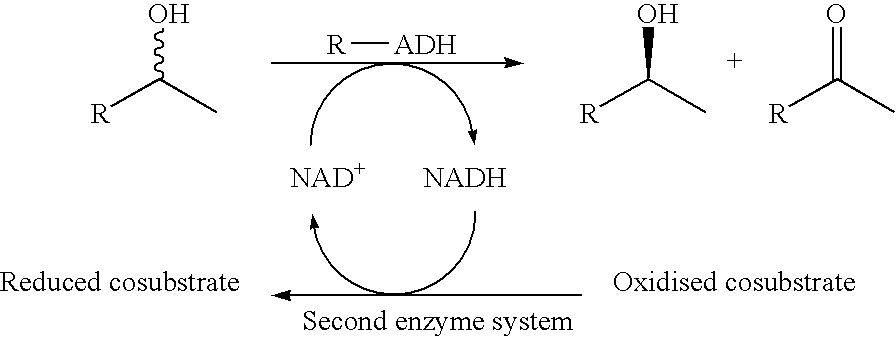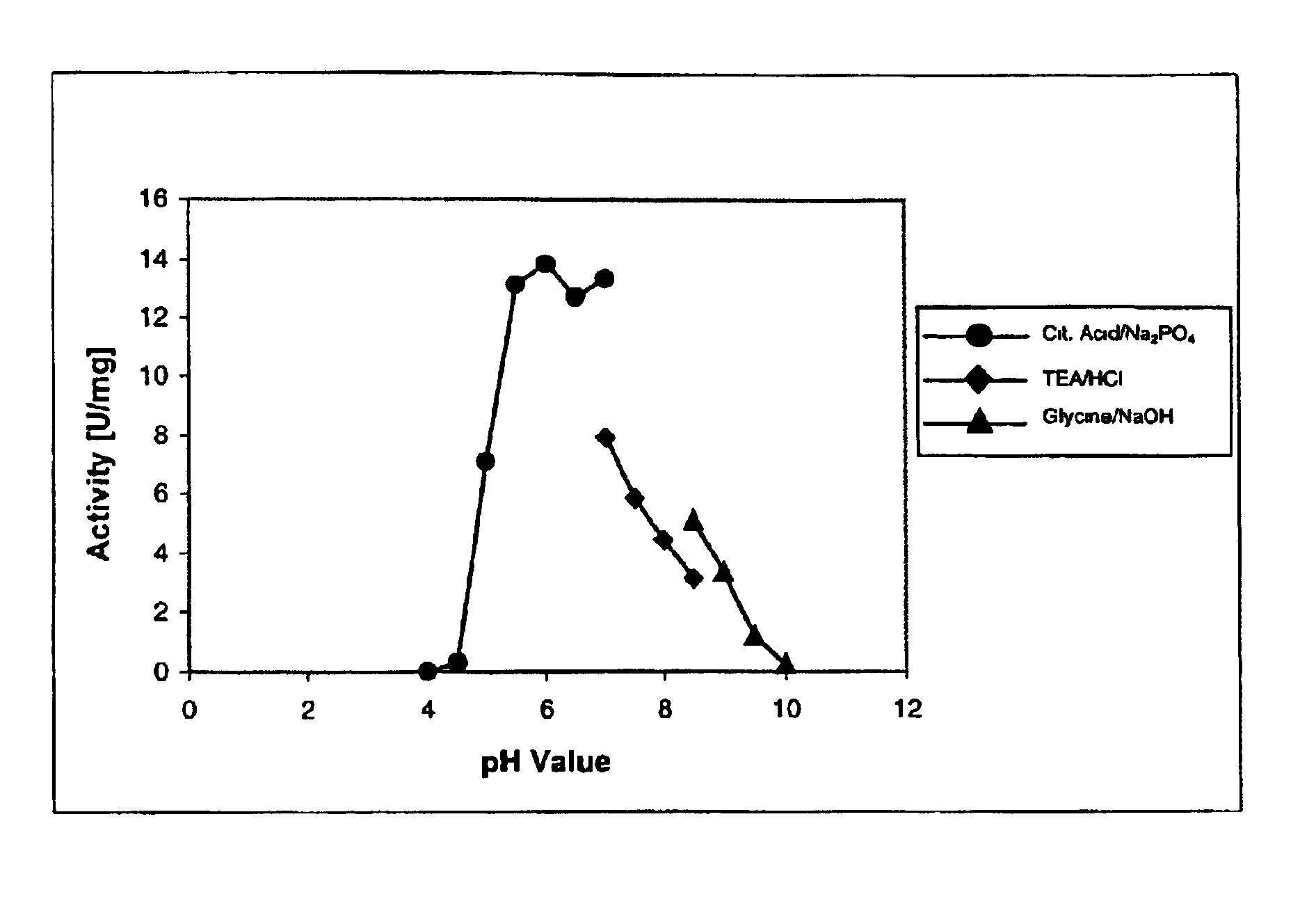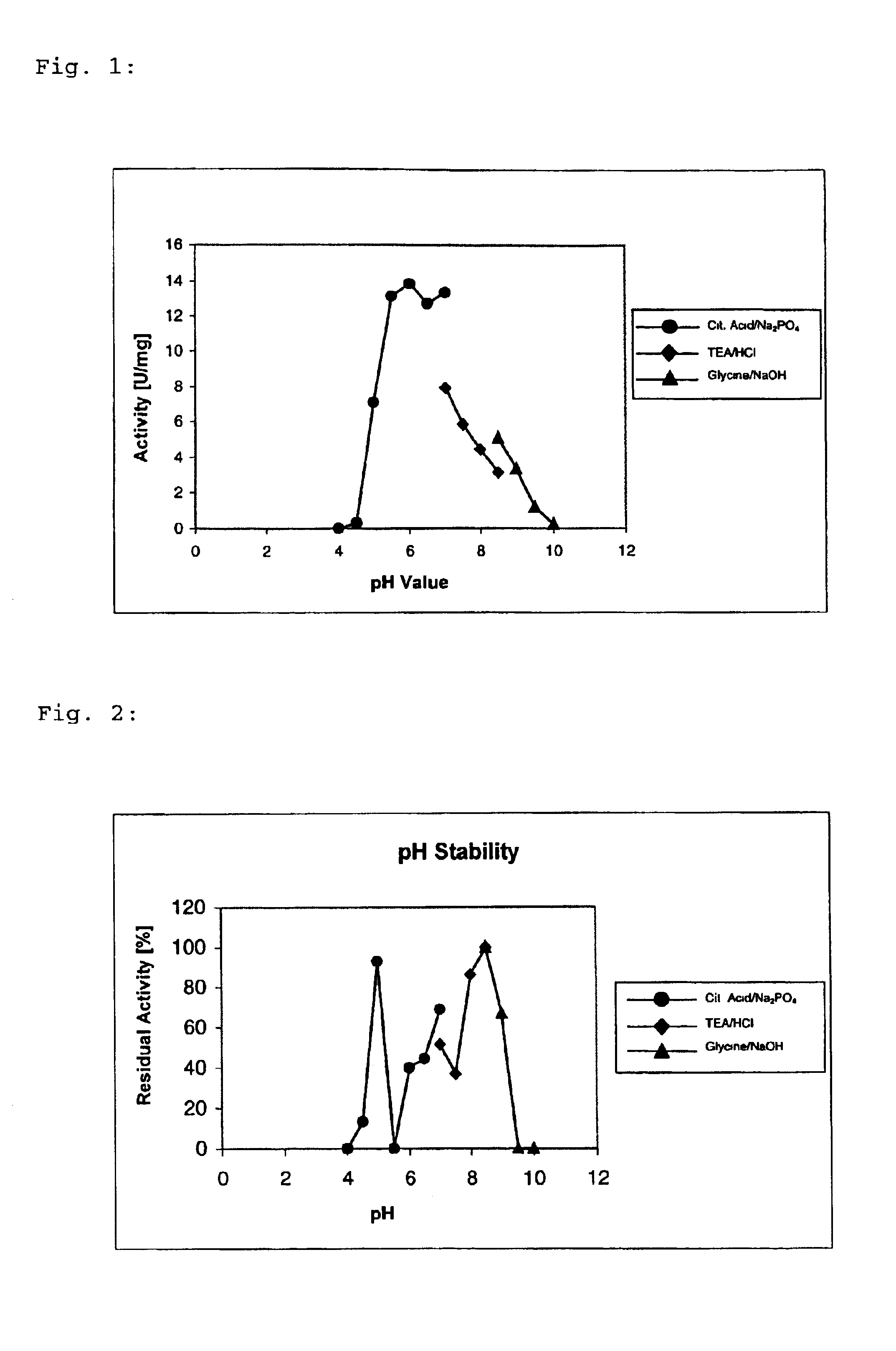NADH oxidase from lactobacillus
a technology of lactobacillus and oxidase, which is applied in the field of nadh oxidase from lactobacillus, can solve the problems of inability to complete the equilibrium reaction, less suitable formation of enzymes, and difficult process steps, and achieves easy production and high activity
- Summary
- Abstract
- Description
- Claims
- Application Information
AI Technical Summary
Benefits of technology
Problems solved by technology
Method used
Image
Examples
examples
1) Cultivation of Lactobacillus brevis for Obtaining NADH Oxidase
[0052]Lactobacillus brevis DSM 20054 was cultivated in a standard medium for lactobacillae. In this connection it was found that the strain grew significantly better under the addition of oxygen than under the anaerobic conditions that are in fact normally used for lactobacillus strains. An enzyme test on the activity of an NADH oxidase showed that the strain particularly under these unusual cultivation conditions exhibits a high activity of an NADH oxidase (NOX).
[0053]For the enzyme purification and characterisation cells were therefore cultivated under the following conditions:
[0054]Medium: Pro 1 L: 10 g caseine peptone, tryptically digested; 10 g meat extract; 5 g yeast extract; 20 g glucose; 1 g Tween 80; 2 g K2HPO4; 5 g Na acetate; 2 g diammonium citrate; 0.2 g MgSO4×7H2O; 0.05 g MnSO4×H2O; pH=6.2-6.5.
[0055]Cultivation is carried out in a shaken flask (equipped with 2 baffles) at 30° C. for 2 days while stirring. ...
PUM
| Property | Measurement | Unit |
|---|---|---|
| pH | aaaaa | aaaaa |
| pH | aaaaa | aaaaa |
| temperature | aaaaa | aaaaa |
Abstract
Description
Claims
Application Information
 Login to View More
Login to View More - R&D
- Intellectual Property
- Life Sciences
- Materials
- Tech Scout
- Unparalleled Data Quality
- Higher Quality Content
- 60% Fewer Hallucinations
Browse by: Latest US Patents, China's latest patents, Technical Efficacy Thesaurus, Application Domain, Technology Topic, Popular Technical Reports.
© 2025 PatSnap. All rights reserved.Legal|Privacy policy|Modern Slavery Act Transparency Statement|Sitemap|About US| Contact US: help@patsnap.com



